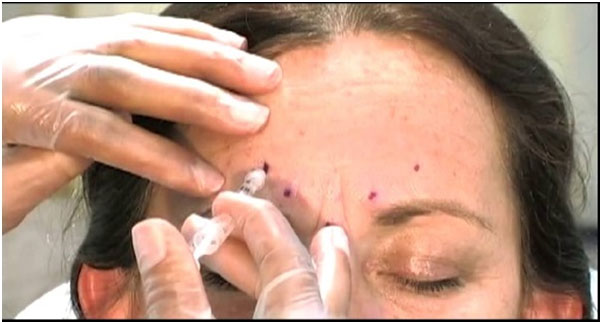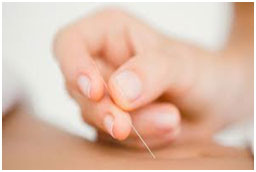Botox Treatment in Reno
Like other significant discoveries, sildenafil, (Viagra) comes to mind, the cosmetic use of Botox to reduce fine lines and wrinkles wasn’t a feature, but a side effect. Originally developed to treat strabismus (crossed eyes), blepharospasm (uncontrollable blinking), and head position and neck pain associated with cervical dystonia (a movement disorder characterized by involuntary muscle contractions), patients and practitioners alike noticed it became impossible to contract the surrounding tissues. (1)
(Viagra was invented to relieve chest pain from coronary artery disease. Its’ effect on the heart was minimal, but proved so effective in improving blood flow to the pelvis, it resulted in a rejuvenation revolution, for men, of the tissues “down below.” For the ladies, not so much.)
40 million times more powerful than cyanide, Botox in Reno can paralyze muscles throughout body if ingested and can weaken muscles in a controlled manner to produce desirable cosmetic and medical effects when injected in tiny doses.
Botox acts by temporarily paralyzing the nerves that control the injected muscles. The treatment area can neither contract nor wrinkle. With a little TLC and maintenance, Botox prevents new wrinkles from forming, yields not a frozen, but a ‘rested look and corrects asymmetric facial features and expressions.
For the more technically inclined, Botox Cosmetic (botulinum toxin type A) blocks neuromuscular transmission by binding to acceptor sites on motor nerve terminals, entering the nerve terminals, and inhibiting the release of acetylcholine. This inhibition occurs as the neurotoxin cleaves SNAP-25, a protein integral to the successful docking and release of acetylcholine from vesicles situated within nerve endings.
When injected intramuscularly at therapeutic doses, Botox Cosmetic partially denervates the target resulting in a localized reduction in activity. Synergistically, the muscle atrophies, axonal sprouting occurs, and extrajunctional acetylcholine receptors develop. The muscle frequently reinnervates, slowly reversing muscle denervation produced by Botox Cosmetic. (2)
Experience and Technique-The Best Reasons to Choose the Clearfield Medical Clinic for Your Botox and all Your Non-Surgical Aesthetic Rejuvenation.
In the fall of 2002, Dr. Clearfield attended a “skills workshop” for Family Physicians. The take-away procedures taught in that long ago Orlando, Florida workshop changed his practice forever.
The first topic, “Long-Term Hormone Replacement Via Testosterone Pellet Insertion,” began his fascination and study of all things endocrine with an emphasis on Bioidentical Hormone Replacement.
The second seminar introduced a newly approved use of dilute botulism poison-eradicating facial wrinkles. The original FDA official indication was for moderate to severe frown lines between the eyebrows (the “11”) in people 18 to 65 years of age only. (3)
The rest, as they say is history. The look, all-be-it temporary (3-4 months) was great, but as in all things American, if a little is good, a lot should be great, no?
‘What about the crow’s eyes? What about the “irrigation ditch” in the center of my fore head? Can I flatten 40 years of smoking wrinkling my upper lip? Can I soften my rapidly protruding chin? What can I do about the skin hanging from my jaw since I lost all that weight?’
With care, each area is treatable, but only Botox has the FDA’s sanction to go after crow’s eyes and upper forehead lines. The other neuromodulators, Dysport and Xeomin are indicated for glabellar lines only.
To be fair, all three neuromodulators have other indications.
Botox has the FDA’s blessing for:(4)
- Treatment of urinary incontinence due to detrusor overactivity associated with a neurologic condition [e.g., spinal cord injury (SCI), multiple sclerosis (MS)] in adults who have an inadequate response to or are intolerant of an anticholinergic medication
- Prophylaxis of headaches in adult patients with a chronic migraine (≥15 days per month with a headache lasting 4 hours a day or longer)
- Treatment of upper limb spasticity in adult patients
- Treatment of cervical dystonia in adult patients, to reduce the severity of abnormal head position and neck pain
- Treatment of severe axillary hyperhidrosis that is inadequately managed by topical agents in adult patients
- Treatment of blepharospasm associated with dystonia in patients ≥12 years of age
- Treatment of strabismus in patients ≥12 years of age
Xeomin (5)
- Adults with cervical dystonia, to decrease the severity of abnormal head position and neck pain in both botulinum toxin-naïve and previously treated patients
- Blepharospasm in adults previously treated with onabotulinumtoxinA (Botox®)
Dysport (6)
- The treatment of adults with cervical dystonia
- The temporary improvement in the appearance of moderate to severe glabellar lines associated with procerus and corrugator muscle activity in adult patients < 65 years of age
- The treatment of upper limb spasticity in adults.
- The treatment of lower limb spasticity in pediatric patients two years of age and older.
At the beginning (of the Botox era), Botox was administered with relatively big needles and a general disregard for facial anatomy. The result was bruising, swelling and frequent paralysis of the levator muscles causing unsightly eye droop (ptosis).
The good news is, in the case of at worst, this will wear off in 3 months. A better solution for eyelid droop is treatment with Iopidine 0.5%, prescription eye drops. Lopidine alleviates the droop 2-4 weeks.
The best course of action, naturally, is minimal to no bruising and zero eye ptosis. While teaching a group of physician acupuncture students the art of needling, Dr. Clearfield experienced an “ah ha moment.” Upon instructing his students on how to find and needle specific points on the face, he kept mentioning how those points were the same as where he was asked to apply Botox Cosmetic. Dr. C experimented with much smaller, 31G, 6 mm long needles, and delivered his Botox aliquot at a 30 to 45-degree angle to the surface as his Japanese acupuncture instruction taught. (Japanese acupuncture is the gentlest of needling techniques as needles barely penetrate the skin.) The result since implemented, is a more precise allocation of Botox with minimal to no bruising, and NOT ONE INSTANCE OF PTOSIS (EYE DROOP).
Traditional Administration of Botox

Angling of Needle for Better Placement, Less Bruising and (To Date) NO PHYSICIAN INDUCED EYE DROOP

Where We Inject Botox (7)

Contraindications/Warnings (8)
- Hypersensitivity to any botulinum toxin preparation or to any of the components in the formulation
- Infection at the proposed injection site
- Potency Units of BOTOX is not interchangeable with other preparations of botulinum toxin products
- Spread of toxin effects; swallowing and breathing difficulties can lead to death
- Immediate medical attention in cases of respiratory, speech or swallowing difficulties is required. (Knock wood, we’ve never experienced this complication.)
- Concomitant neuromuscular disorder may exacerbate clinical effects of treatment
- Use with caution in patients with compromised respiratory function
- Corneal exposure and ulceration.
- Retrobulbar hemorrhages and compromised retinal circulation.
- Bronchitis and upper respiratory tract infections in patients treated for upper limb spasticity
- A chronic migraine: neck pain, headache.
- Spasticity: pain in extremity.
- Cervical Dystonia: dysphagia, upper respiratory infection, neck pain, headache, increased cough, flu syndrome, back pain, rhinitis.
- Axillary Hyperhidrosis: injection site pain and hemorrhage, non-axillary sweating, pharyngitis, flu syndrome
Have a Question?
- http://www.centerwatch.com/drug-information/fda-approved-drugs/drug/772/botox-cosmetic-botulinum-toxin-type-a
- http://www.centerwatch.com/drug-information/fda-approved-drugs/drug/772/botox-cosmetic-botulinum-toxin-type-a
- http://www.multivu.com/assets/7203552/documents/7203552-History-of-BOTOX-Fact-Sheet-APC37QJ14-original.pdf
- https://www.accessdata.fda.gov/drugsatfda_docs/label/2011/103000s5232lbl.pdf
- https://www.accessdata.fda.gov/drugsatfda_docs/label/2010/125360lbl.pdf
- https://www.accessdata.fda.gov/drugsatfda_docs/label/2016/125274s107lbl.pdf
- https://www.slideshare.net/zygulek/botox-training/82
- https://www.accessdata.fda.gov/drugsatfda_docs/label/2011/103000s5236lbl.pdf



